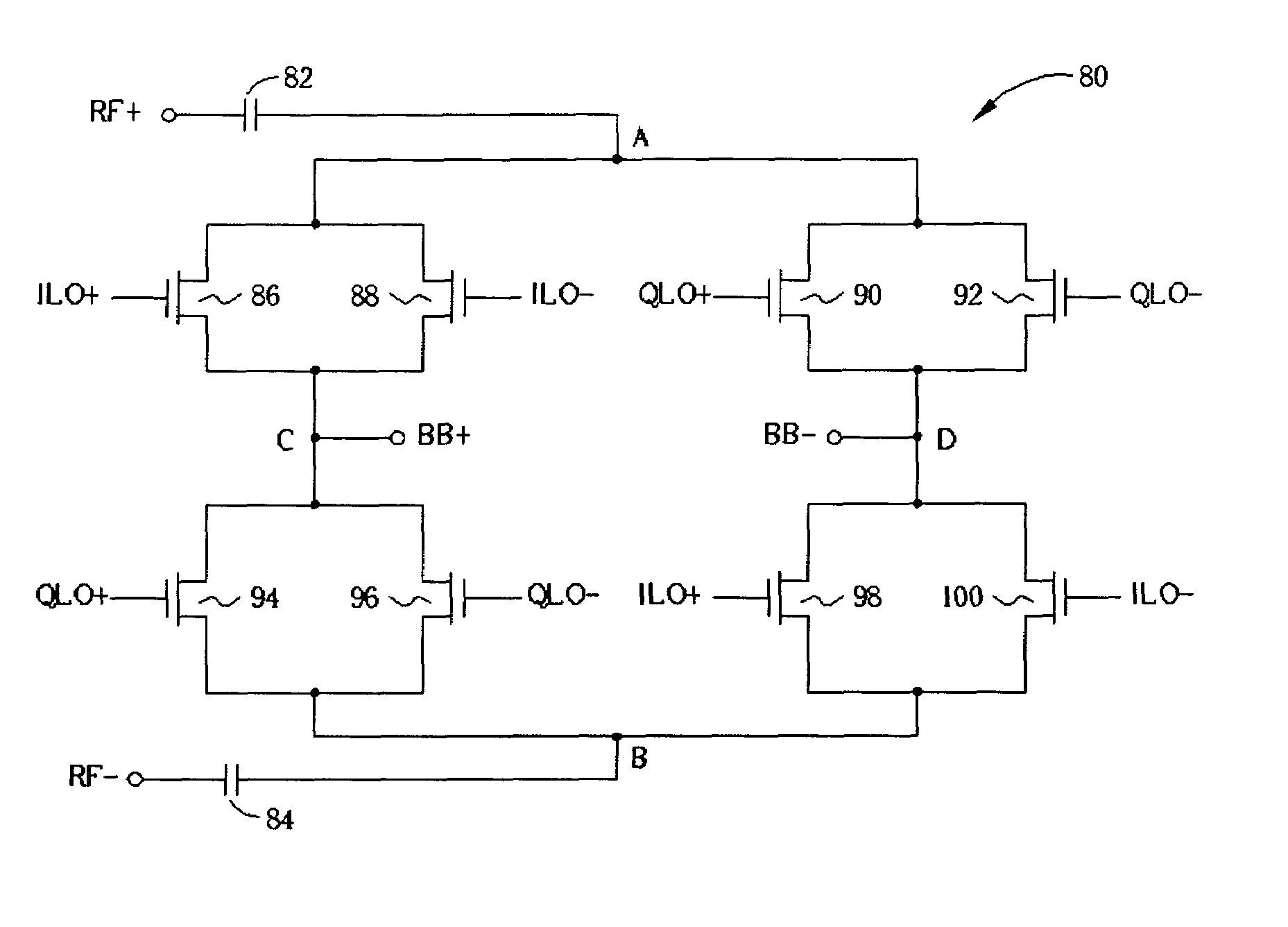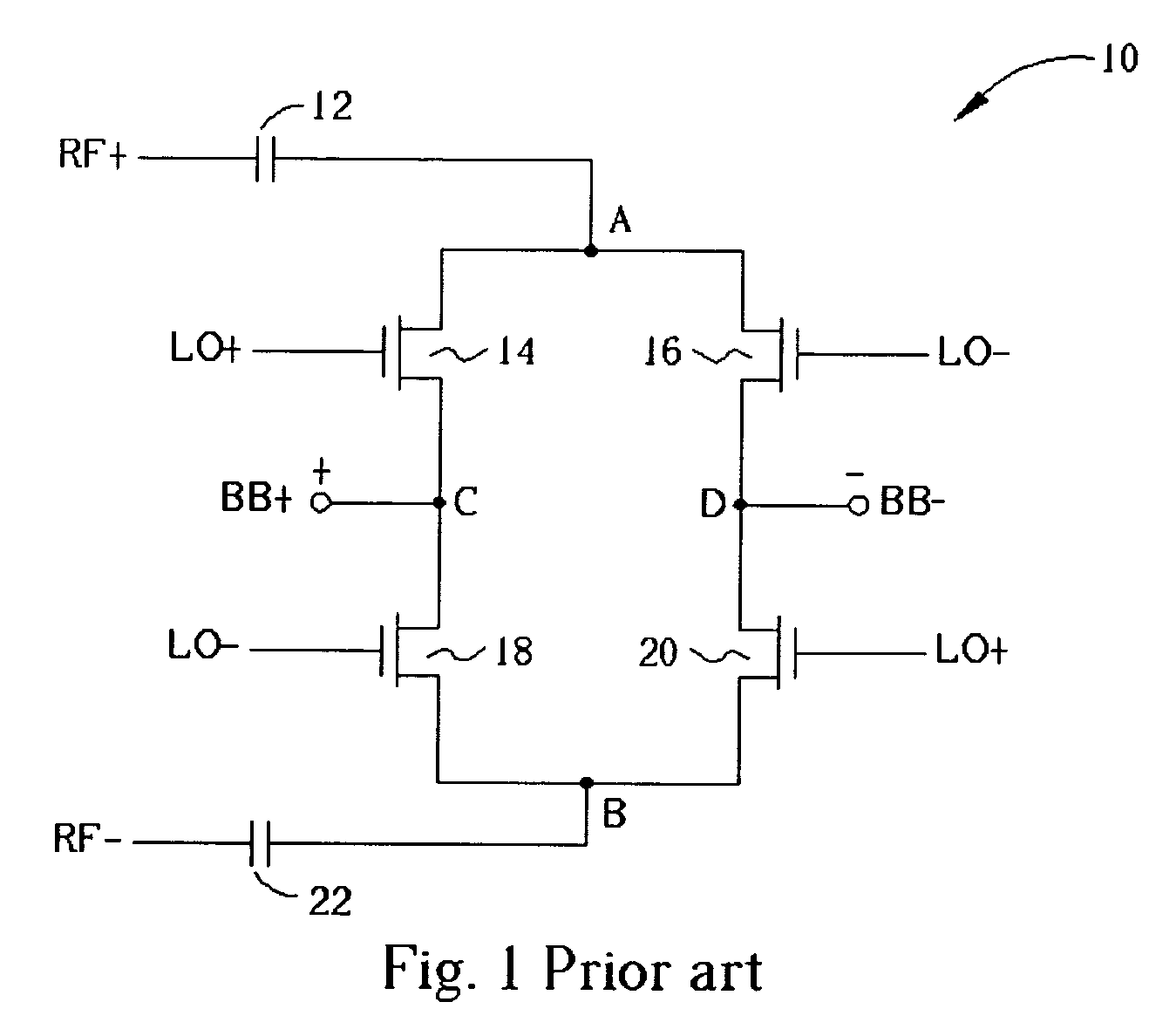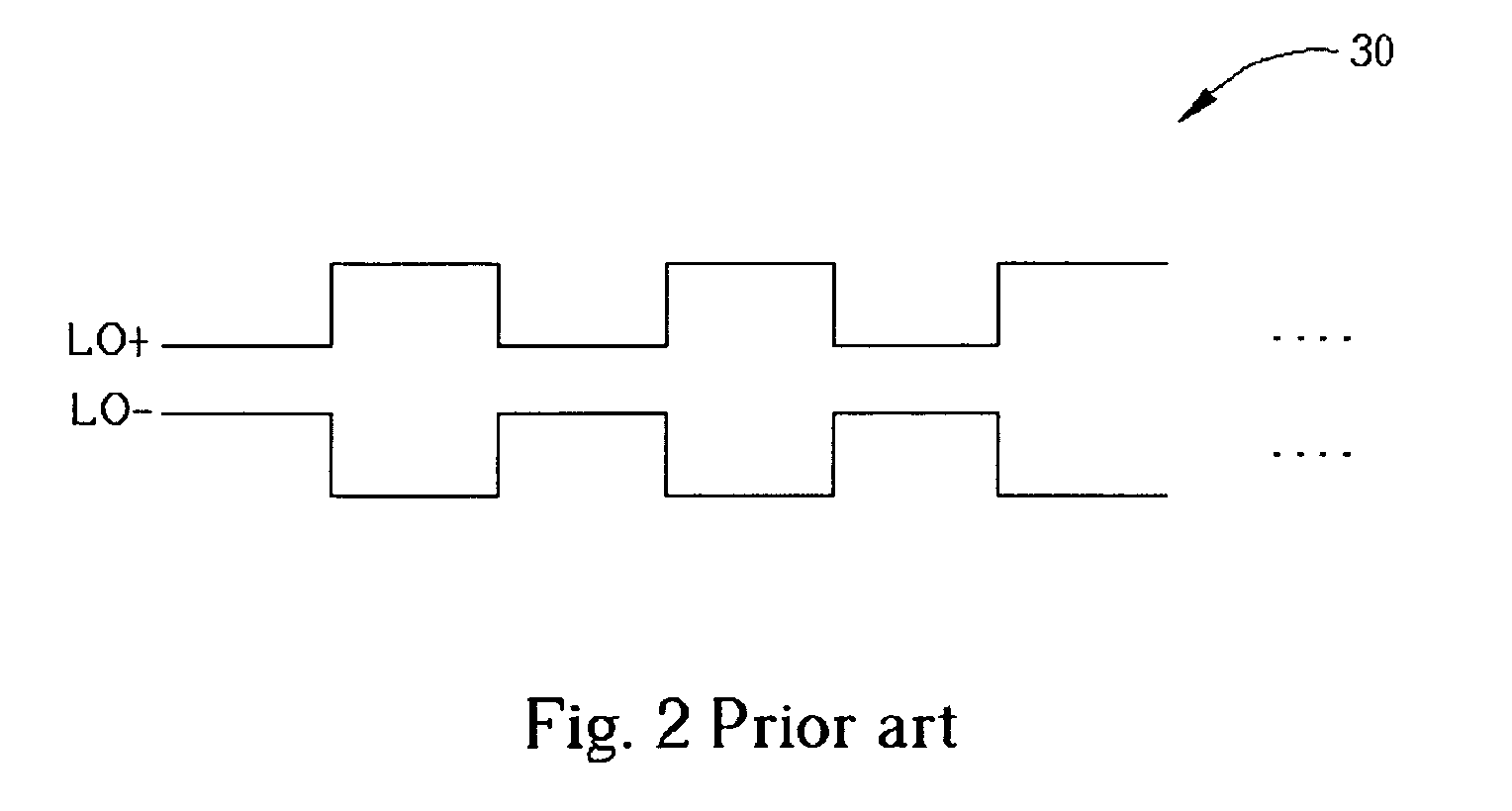Passive harmonic switch mixer
a mixer and harmonic switch technology, applied in the field of mixers, can solve the problems of severe flicker noise at the low frequency, complex circuit design, and reduce the signal-to-noise ratio seen at the output bb por
- Summary
- Abstract
- Description
- Claims
- Application Information
AI Technical Summary
Benefits of technology
Problems solved by technology
Method used
Image
Examples
Embodiment Construction
[0025]FIG. 5 is a schematic diagram of a passive harmonic switch mixer 80 according to the present invention. The passive harmonic switch mixer 80 includes a first input port A and a second input port B for receiving a differential RF signal pair having a positive signal RF+ and a negative signal RF− respectively. A first output port C and a second output port D are for outputting a differential baseband signal pair having a positive signal BB+ and a negative signal BB− respectively. A positive side capacitor 82 is connected to the node A and a negative capacitor 84 is connected to node B for DC isolation. There are four switch pairs for mixing the differential RF signal pair RF+ and RF− with two pairs of differential local oscillator signals, which includes an in-phase differential local oscillator signal pair ILO+ and ILO− and a quadrature-phase differential local oscillator signal pair QLO+ and QLO−, to generate a positive signal BB+ and a negative signal BB−. The first switch pa...
PUM
 Login to View More
Login to View More Abstract
Description
Claims
Application Information
 Login to View More
Login to View More - R&D
- Intellectual Property
- Life Sciences
- Materials
- Tech Scout
- Unparalleled Data Quality
- Higher Quality Content
- 60% Fewer Hallucinations
Browse by: Latest US Patents, China's latest patents, Technical Efficacy Thesaurus, Application Domain, Technology Topic, Popular Technical Reports.
© 2025 PatSnap. All rights reserved.Legal|Privacy policy|Modern Slavery Act Transparency Statement|Sitemap|About US| Contact US: help@patsnap.com



